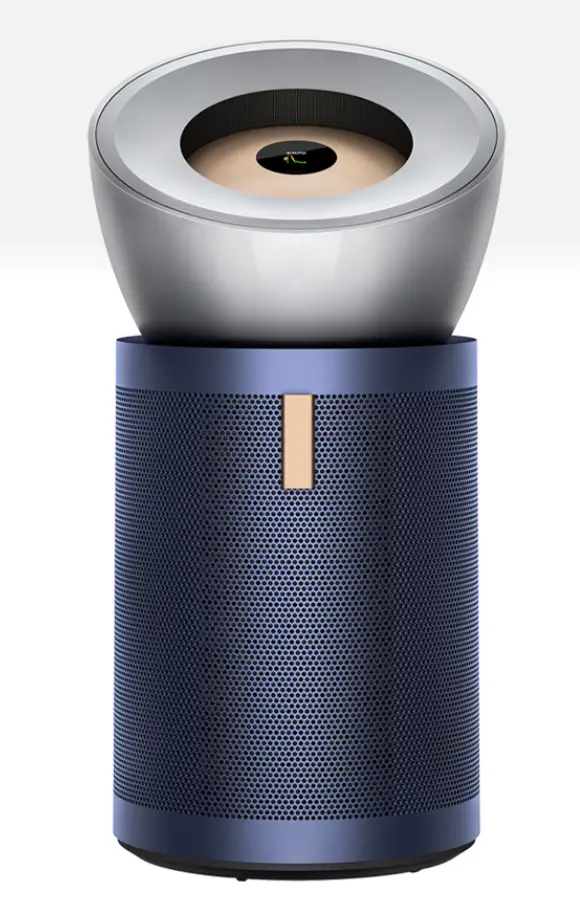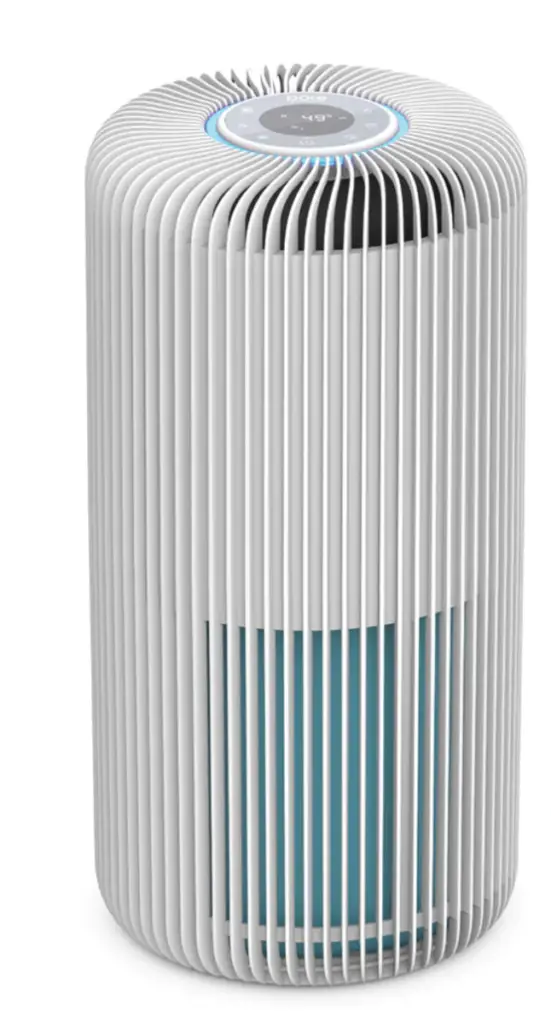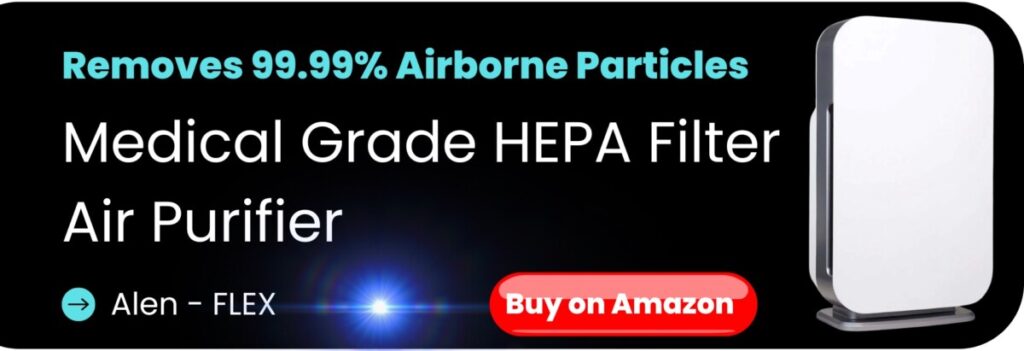Almost 4 ppm of formaldehyde has been found in homes all across the U.S. This toxic gas lingers in our air for up to two years and needs specific air purifiers to remove it.
Air purifiers with activated carbon or catalytic filters can remove formaldehyde. The formaldehyde gas molecules stick to the surface of the carbon filter and are effectively removed from the air. While catalytic filters trap the formaldehyde and break it down into water and carbon dioxide.
This article is all you need to know about formaldehyde and how to remove it from your home, and don’t miss out on our in-depth discussion on the common sources of formaldehyde in our homes.
Formaldehyde Around The Home
Formaldehyde is a volatile organic compound (VOC) with a pungent, pickle-like smell that is used in building materials and other essential household items. It’s mainly found in pressed-wood materials like adhesives, plywood, and paper product coatings.
Unfortunately, it easily converts into a gas at room temperature and then hangs around in the air, especially in newly-built homes.
In fact, according to a report by CDC, formaldehyde typically takes two years to dissipate.
Poor ventilation and a high level of insulation, as is the case in newly built homes, will cause the gas to stick around for longer.
It’s important to note that high humidity and high temperature can increase the concentration of formaldehyde by speeding up its release from materials and products.
Apart from construction materials, the following items and activities can also increase the amount of formaldehyde inside our homes:
- Smoking
- Fuel-burning appliances
- Use of formalin
- Chemical mixtures containing formaldehyde
- Clothing (as formaldehyde is used for a permanent-press effect)
How Air Purifiers Remove Formaldehyde
An air purifier is the best way to remove airborne contaminants from our homes.
Air purifiers have different filters, each of which serves a different purpose. For example, pre-filters act as the first line of defense, trapping large-sized particles, while HEPA filters remove tiny particles as small as 0.3 microns.
However, it’s the activated carbon filters that are used to remove VOCs. It’s through these carbon filters that air purifiers remove formaldehyde.
Most air purifiers come with activated carbon filters, which means that most air purifiers are able to remove formaldehyde.
But a new type of filter known as ‘catalytic filters’ can now remove up to three times more formaldehyde than an activated carbon filter.
How Catalytic Filters Work
Catalytic Filters trap the formaldehyde and break it down into water and carbon dioxide. These filters never need to be replaced, and last the life of the air purifier.
Most air purifiers that have catalytic filters also have activated carbon filters – improving the amount and speed they can remove formaldehyde from our home, for example:

The Dyson Big+Quiet™ Formaldehyde Purifier has a HEPA, activated carbon and catalytic filter, which never needs replacing.
It’s specifically designed to remove formaldehyde from the air.
These air purifiers are often far more expensive than those with just activated carbon filters, which are still effective against formaldehyde, including:

Pure Enrichment’s PureZone Smart Turbo Air Purifier.
It has a pre-filter, antibacterial, HEPA and activated carbon filters to effectively remove formaldehyde.
Here’s some more information on how air purifiers with activated carbon remove formaldehyde, and how to improve their efficiency in your home.
How Carbon Filters Work
Carbon filters are essentially a bed of carbon. It works two ways:
- Some small pollutants (tobacco smoke, chemical fumes, exhaust emission) become trapped inside the pore structure (tiny holes).
- The majority of VOCs (including formaldehyde) stick to the surface of the filter. Activated carbonhas a big surface area that provides lots of tiny spaces for VOCs, and other smelly gases, to cling to.
In this way, activated carbon filters successfully remove all VOCs (except fluorides, nitrates, and sodium).
How Much Formaldehyde Carbon Filters Can Remove
A few factors decide how much formaldehyde will be removed by an air purifier, the major ones are the temperature and amount (concentration) of formaldehyde and other contaminants in the air.
The lower the air temperature the more efficient your purifier will be at removing it from the air.
Tests have revealed that activated carbon can effectively remove 50% of formaldehyde within 15 minutes of the air purifier’s operation under moderate concentration levels.
By 25 minutes, the level of formaldehyde will likely down to 0%.
This shows that carbon filter air purifiers are a reliable way to remove formaldehyde from your home.
It’s important to remember that the air purifier’s effectiveness depends on how much formaldehyde is in your air. The higher the concentration, the longer it will take the air purifier to remove.
If you are concerned that you have exceptionally high levels of formaldehyde in your home, you should contact the Environmental Protection Agency (EPA) or the Toxic Substances Control Act hotline.
How To Improve Efficiency Of Carbon Filters
There are a few things you can do to improve the efficiency of your purifier regardless of the temperature or contaminant concentration:
- Buy Air Purifiers With Pre-filters: Pre-filters trap large particles and prevent them from saturating other filters like the activated carbon and HEPA, prolonging their lifespan. Since pre-filters are readily available and inexpensive, it’s more economical to frequently replace them rather than changing the carbon filter.
- Clean The Carbon Filter Regularly: It is best practice to clean activated carbon filters every three months. After removing the filter, gently rinse it with warm water and let it dry before replacing it. Strictly avoid using soaps, detergents, or any evaporative cleaning agent like alcohol and benzene as they can damage the filter media.
- Replace The Filter: Carbon filters have a lifespan of 18-24 months. Adequately cleaning the filter regularly and replacing it with another good-quality one compatible with your air purifier is essential for effective filtration of formaldehyde and other gases.
- Correctly Place The Air Purifier: The placement of an air purifier plays an important role in filtration. Make sure to place your unit in an open space, a few inches above the ground. This guarantees proper airflow and hence, efficient filtration.
Ozone Generators And Formaldehyde
Ozone generators produce ozone to react and inactivate pollutants. The ozone is an unstable molecule that easily reacts with surrounding gasses and molecules, making them change their chemical makeup.
While ozone generators are not effective against formaldehyde, they can be helpful in the case of low levels of formaldehyde. Ozone air cleaners are approximately 18.2 to 44.2% effective against formaldehyde.
However, it is essential to note that ozone is a highly toxic and potentially lethal gas. We do not recommend ozone generators.
So, Why Do We Need To Remove Formaldehyde?
Apart from the discomfort caused by its pungent smell, formaldehyde’s negative impact on health makes it imperative to remove it from the air. Some of the more common symptoms of formaldehyde exposure are:
- Skin rashes: Formaldehyde is a primary skin sensitizer and can cause skin rashes.
- Contact dermatitis: In case of high exposure, the gas can lead to severe contact dermatitis and can lead to anaphylactic reactions in some people. This also holds for direct contact with chemicals containing formaldehyde.
- Suffocation: Formaldehyde vapors are easily inhaled through everyday breathing. In extreme cases, it acts as a systemic poison, capable of irritating the throat to the point of suffocation.
- Dizziness: The strong odor of formaldehyde can cause dizziness.
- Burning sensation in eyes and nose: At a minimal level, formaldehyde irritates our eyes and nose. But when exposed to high concentrations of formaldehyde for 12 hours or more, our eyes can develop corneal ulceration, perforation, or even permanent vision loss.
- Cancer: Research classifies formaldehyde as a carcinogen. In fact, a formaldehyde concentration between 0.7 and 15.2 ppm can potentially mutate DNA to cause cancer.
Since formaldehyde is toxic for both humans and pets, it’s crucial to eliminate it from our homes. Buying an air purifier with a deep-bed activated carbon filter or catalytic filter is one of the safest ways to ensure maximum filtration of the gas.

